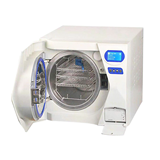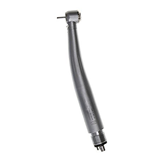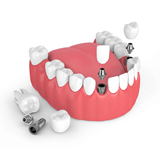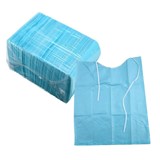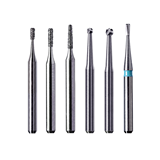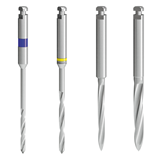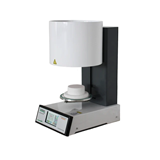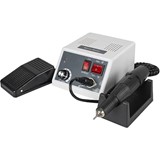Key takeaways
- Price ranges: Dental chair prices in Australia vary significantly based on features and quality:
- Budget models: $1,500 – $5,000
- Mid-range models: $5,000 – $15,000
- Premium models: $15,000 – $30,000+
- Financing options: Leasing and equipment finance are popular choices, with terms typically ranging from 12 to 60 months.
- Maintenance costs: Annual servicing can cost between $300 and $600, depending on the provider and location.
- Compliance: Ensure chairs meet Australian standards, including AS/NZS 60335 for electrical safety and MEPS for energy efficiency.
Introduction
Investing in a dental chair is a significant decision for any dental practice. In Australia, where quality and compliance are paramount, understanding the cost spectrum, features, and financing options available is crucial. This guide delves into the factors influencing dental chair prices, helping you make an informed choice that aligns with your practice's needs and budget.
Factors influencing dental chair prices in Australia
1. Chair type and configuration
- Standard chairs: Basic models suitable for general dentistry procedures.
- Surgical chairs: Designed for complex procedures, offering enhanced adjustability and support.
- Pediatric chairs: Tailored for children's comfort and safety.
- Specialty chairs: Customised for specific dental specialties like orthodontics or periodontics.
2. Features and technology
- Ergonomics: Adjustable headrests, lumbar support, and memory foam cushioning enhance patient comfort.
- Technology integration: Incorporation of digital controls, LED lighting, and wireless foot pedals streamline operations.
- Infection control: Antimicrobial upholstery and seamless designs facilitate easy cleaning and sterilisation.
3. Brand reputation and warranty
- Established brands: Companies like A-dec, KaVo, and Planmeca are renowned for their durability and reliability.
- Warranty terms: Standard warranties range from 1 to 3 years, with options for extended coverage.
4. Compliance with Australian standards
- Electrical safety: Ensure chairs comply with AS/NZS 60335 standards.
- Energy efficiency: Models should meet the Minimum Energy Performance Standards (MEPS).
- Refrigerant use: Adhere to Australian regulations regarding refrigerant types and usage.
Understanding the price spectrum
Budget models ($1,500 – $5,000)
- Ideal for: Start-ups or practices with limited budgets.
- Features: Basic functionality with manual adjustments.
- Considerations: May lack advanced ergonomic features and technology integration.
Mid-range models ($5,000 – $15,000)
- Ideal for: Established practices seeking enhanced features.
- Features: Electric adjustments, improved ergonomics, and some technological integrations.
- Considerations: Offers a balance between cost and functionality.
Premium models ($15,000 – $30,000+)
- Ideal for: High-end practices or those specialising in complex procedures.
- Features: Advanced technology, superior ergonomics, and customisable configurations.
- Considerations: Higher upfront cost but offers long-term value through durability and efficiency.
Leasing vs buying financial impact
For many Australian dental practices, the decision between leasing and buying a dental chair comes down to cash flow, tax benefits, and long-term ownership goals.
Leasing offers lower upfront costs, making it easier to upgrade to newer technology without a large capital outlay. Lease terms for dental chairs typically range from 3 to 7 years, with monthly repayments starting from around $250 to $600 depending on the chair’s value, term length, and interest rate. The Australian Taxation Office (ATO) generally allows lease payments to be fully deductible as an operating expense, improving cash flow and reducing taxable income.
Buying outright, whether through cash or equipment finance, means you own the asset from day one. This allows you to claim depreciation under the ATO’s depreciation rules. For dental chairs, the effective life is generally considered to be 8 to 12 years, with depreciation rates varying depending on whether you use the diminishing value or prime cost method. If eligible, small businesses may also take advantage of the instant asset write-off threshold (check current ATO limits and conditions).
When comparing the two options, it’s important to run the numbers for your specific situation. A $20,000 chair financed over 5 years at 7% interest could result in total repayments of around $23,750, while leasing the same chair for the same term may cost closer to $25,000 but free up capital for other practice investments.
Cost of ownership over time
While purchase price is the most visible cost, the total cost of ownership (TCO) over the dental chair’s lifespan is where true value is determined. A quality mid-range dental chair priced at $20,000 may last 10 to 12 years with proper care, but annual running costs must be factored in.
Key ongoing expenses include:
- Servicing and maintenance – Expect to spend $300 to $700 per year for preventative servicing to keep the chair compliant and in warranty.
- Repairs – Unexpected breakdowns, such as replacing hydraulic systems or electronics, can cost anywhere from $500 to $2,500.
- Consumables and parts – Upholstery, armrests, and headrests may require replacement every few years, costing $200 to $800 per component.
- Compliance checks – Some Australian states require regular compliance testing for electrical safety, infection control, and waterline management.
Over a 10-year period, a $20,000 dental chair could realistically cost $26,000 to $30,000 in total ownership costs once maintenance, parts, and servicing are factored in. This makes it important to compare not just the sticker price, but also the reliability and after-sales support offered by the supplier.
Financing options for dental chairs in australia
Choosing the right financing approach can significantly impact your cash flow and long-term profitability. In Australia, dental clinics typically consider the following:
- Leasing – Ideal if you want to preserve working capital and avoid large upfront expenses. Monthly repayments are fixed and predictable, making budgeting easier. At the end of the lease, you can often upgrade to the latest model without the hassle of resale.
- Equipment finance – A popular choice for clinics wanting eventual ownership. You repay the equipment cost over an agreed term, with interest. Once paid off, the chair is yours, and you may be eligible for ATO tax deductions, including under the Instant Asset Write-Off (if thresholds apply).
- Vendor financing – Some dental equipment suppliers offer in-house finance packages, which can be convenient and quicker to arrange. However, compare interest rates and terms with independent lenders to ensure competitiveness.
- Government grants and incentives – Occasionally, state or federal programs provide funding support for healthcare equipment purchases, particularly if you’re upgrading to energy-efficient or accessibility-friendly models. Check business.gov.au for current opportunities.
Maintenance and servicing
Dental chairs are high-use assets, so ongoing care is essential to maximise performance and lifespan.
- Routine maintenance – Professional servicing should be carried out at least once a year to ensure mechanical, electrical, and upholstery components remain in optimal condition. Some clinics opt for bi-annual servicing for heavily used chairs.
- Costs – Expect annual servicing fees between $300 and $600, depending on the brand, age, and service inclusions. This does not include unexpected repairs, which can be significantly higher.
- Considerations – Factor maintenance into your total cost of ownership. A well-maintained dental chair can last 10–15 years, whereas neglected equipment may require replacement much sooner. Consider purchasing from suppliers that offer bundled servicing packages for predictable ongoing costs.
Compliance and certification considerations
Dental chairs used in Australia must meet strict safety, performance, and environmental standards. Non-compliance can lead to fines, warranty voids, or patient safety risks.
- Electrical safety – Ensure the chair complies with AS/NZS 60335 standards for electrical safety in medical environments.
- Energy efficiency – Chairs with integrated power systems should meet Minimum Energy Performance Standards (MEPS) to reduce operating costs and environmental impact.
- Refrigerant use – If the chair includes any refrigeration elements (such as for certain dental units), ensure compliance with Australian refrigerant regulations, which govern the type and safe handling of refrigerants.
- Certification – Always choose TGA-approved dental chairs and associated equipment. The Therapeutic Goods Administration (TGA) ensures medical devices meet rigorous safety and quality requirements before being sold in Australia.
Research-backed FAQs
How much does a dental chair cost in Australia?
Dental chair prices in Australia range from $1,500 for basic models to over $30,000 for premium, feature-rich chairs.
What features should I look for in a dental chair?
Prioritise ergonomic design, adjustability, infection control features, and technology integration to enhance patient comfort and operational efficiency.
Are there financing options available for dental chairs?
Yes, options include leasing, equipment finance, vendor financing, and potential government grants.
How often should I service my dental chair?
Regular servicing is recommended to ensure longevity and optimal performance, with annual servicing costing between $300 and $600.
What certifications should a dental chair have?
Ensure the chair complies with AS/NZS 60335 for electrical safety, meets MEPS for energy efficiency, and adheres to Australian refrigerant regulations.
Conclusion
Selecting the right dental chair is a significant investment that impacts your practice's efficiency and patient satisfaction. By understanding the factors influencing dental chair prices, exploring financing options, and ensuring compliance with Australian standards, you can make an informed decision that aligns with your practice's needs and budget




